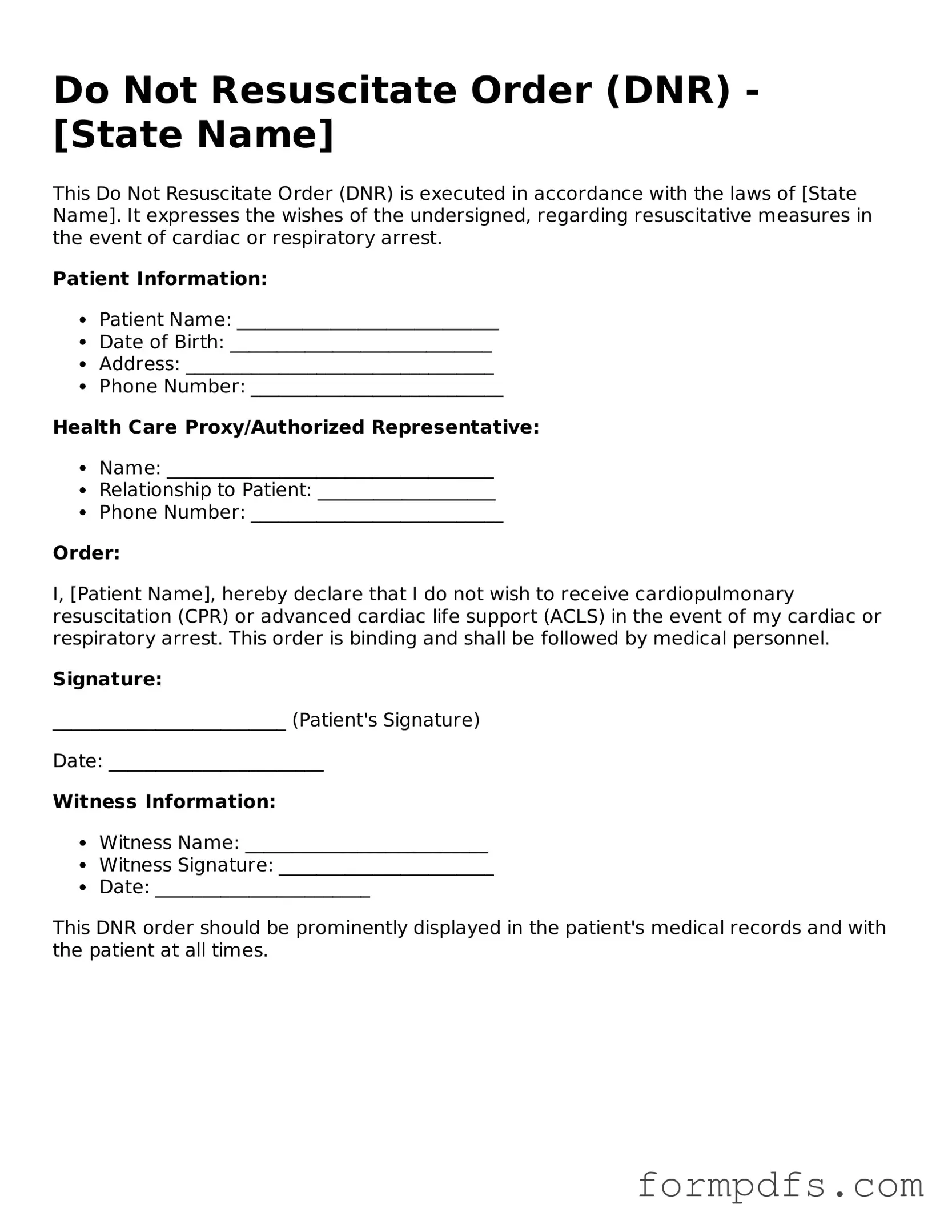What is a Do Not Resuscitate (DNR) Order?
A Do Not Resuscitate Order is a legal document that allows individuals to refuse certain medical interventions, specifically cardiopulmonary resuscitation (CPR), in the event of cardiac or respiratory arrest. This order is typically created by a patient in consultation with their healthcare provider, reflecting the patient's wishes regarding end-of-life care. It is important to note that a DNR does not mean that no medical care will be provided; it simply means that resuscitation efforts will not be initiated if the patient’s heart stops beating or they stop breathing.
Who can request a DNR Order?
Generally, any competent adult can request a DNR Order. This includes individuals who understand the implications of such a decision. In cases where a person is unable to make their own medical decisions, a legally authorized representative, such as a family member or a designated healthcare proxy, may initiate the process. Healthcare providers will often ensure that the person requesting the DNR has the capacity to make informed decisions about their care.
How is a DNR Order created?
Creating a DNR Order typically involves a discussion between the patient and their healthcare provider. This conversation should cover the patient's health status, prognosis, and personal values regarding end-of-life care. Once the decision is made, the healthcare provider will fill out the DNR form, which must be signed by both the patient (or their representative) and the physician. In some states, there may be specific forms or requirements that must be followed, so it is essential to check local regulations.
Where should a DNR Order be kept?
It is crucial for a DNR Order to be easily accessible in case of an emergency. Patients are encouraged to keep a copy of the order in a prominent place, such as on their refrigerator or with their medical records. Additionally, many states recommend that individuals carry a wallet-sized card indicating that a DNR Order is in place. Informing family members and caregivers about the existence of the DNR Order is also important to ensure that everyone's understanding aligns with the patient's wishes.
Can a DNR Order be revoked?
Yes, a DNR Order can be revoked at any time by the patient or their authorized representative. This can be done verbally or in writing. If a patient decides to revoke their DNR Order, they should inform their healthcare provider and ensure that any copies of the previous order are destroyed or marked as invalid. It is essential for all parties involved in the patient's care to be aware of the change to prevent any confusion during a medical emergency.
What happens if a DNR Order is not honored?
If a DNR Order is not honored, it can lead to significant emotional distress for the patient and their family, as well as potential legal implications for healthcare providers. Medical professionals are required to follow the orders outlined in the DNR. If a situation arises where a DNR is not recognized, it is important for the family to address the issue with the healthcare facility and seek clarification. In cases of non-compliance, there may be grounds for legal action, depending on the circumstances and local laws.
